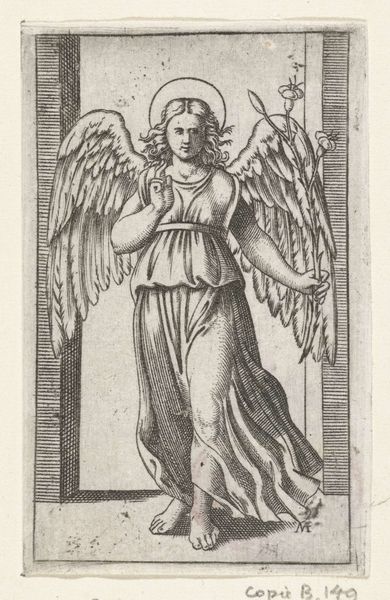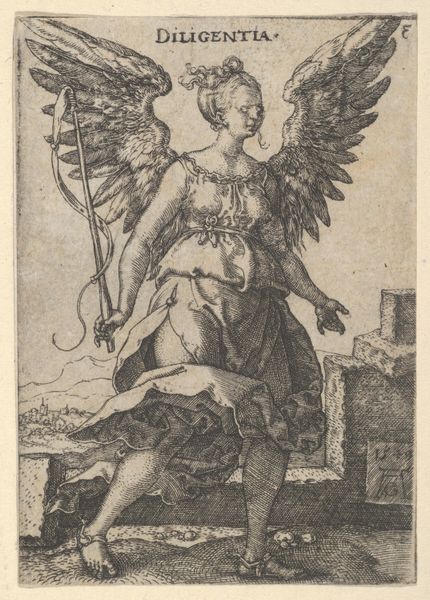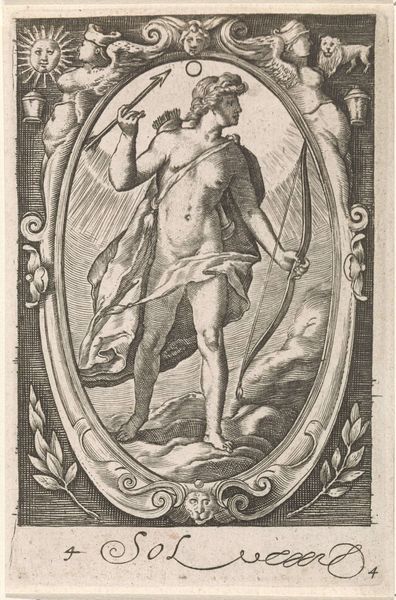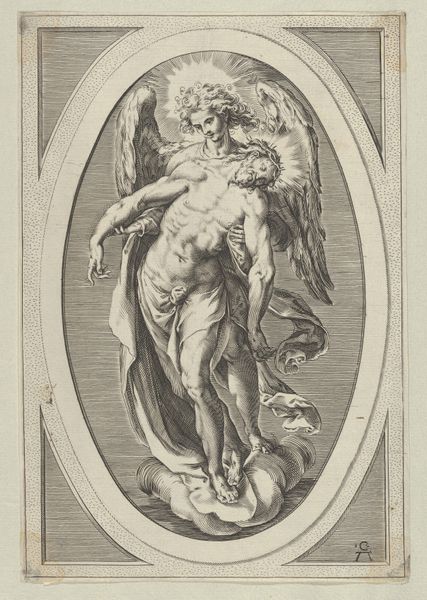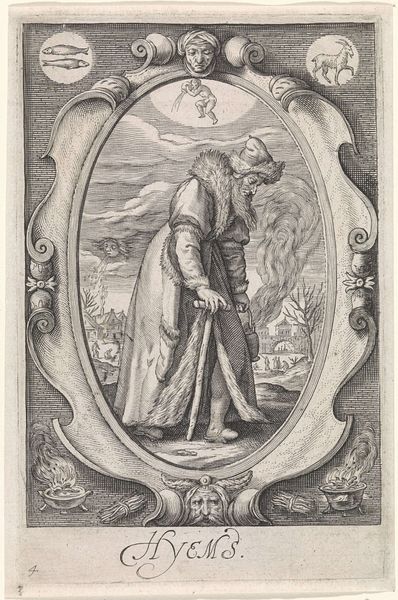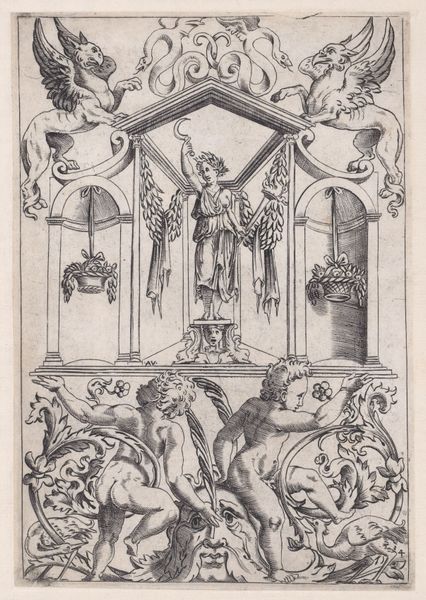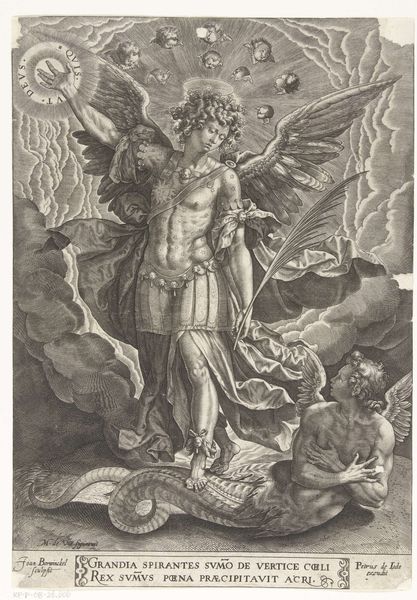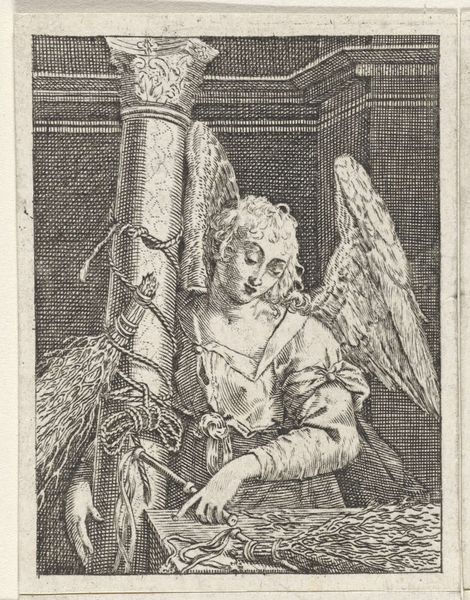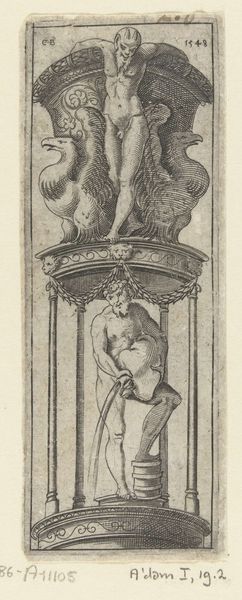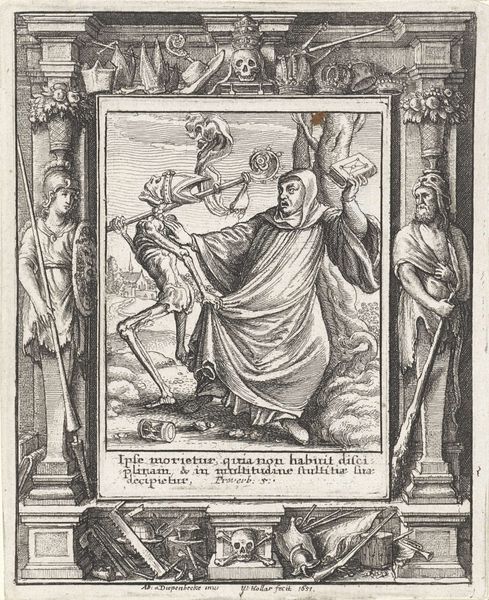
drawing, etching, ink, engraving
#
drawing
#
ink drawing
#
allegory
#
pen drawing
#
etching
#
mannerism
#
figuration
#
ink
#
engraving
Dimensions: height 402 mm, width 265 mm
Copyright: Rijks Museum: Open Domain
Editor: So, here we have "Faam," an engraving by Domenico del Barbiere from the mid-16th century. It’s quite striking – the figure with wings standing on a globe, enclosed in this elaborate circular frame... It feels very grand and symbolic. How do you interpret this work? Curator: This piece demands that we consider the power dynamics at play during the Renaissance. Notice how "Faam"—Fame—is presented as a winged figure, elevated above all else. What does it mean for this figure to be feminine, to be standing on a globe and holding banners declaring “Love”? Editor: It definitely suggests that love, or perhaps devotion, is essential to achieving fame. But what's the significance of her placement, standing on the globe like that? Curator: Precisely! The globe implies dominion, but consider *whose* dominion it really represents. In the context of 16th-century Europe, how complicit might the idea of ‘Fame’ be with the colonization, dispossession, and subjugation happening globally at that time? Editor: So, are you saying that this image, while beautiful, may also subtly reinforce existing power structures and imperial ambitions? The idea of “Fame” as a justification, or even a reward, for conquest? Curator: It’s worth considering, isn't it? This image presents a compelling figure, but by situating the image within broader social and historical narratives, we are pushed to question whose interests this representation of "Fame" truly serves. Editor: I never thought about it that way. It makes you realize that even seemingly innocent artworks can be deeply connected to the power dynamics of their time. Curator: Exactly. And that understanding is crucial if we are to engage with art ethically and responsibly.
Comments
Join the conversation
Join millions of artists and users on Artera today and experience the ultimate creative platform.
